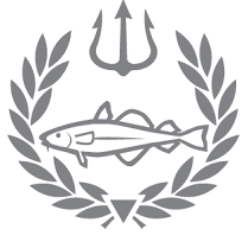On the 14th, I got up bright and early and drove myself to Sea World to meet with Kevin Lewis, the dive safety officer there. He is in charge of all the divers at Sea World. He showed me the exhibits that the divers are responsible for cleaning which include all of the Shamu pools, the dolphin pools, and all the animal care pools. For most of the exhibits, the animals are moved into another pool while the divers are in cleaning. This includes Shamu and most of the dolphins. They don’t move the commersons dolphins or some of the gentler bottlenose dolphins. Divers at Sea World start their day at 5 in the morning and are usually done cleaning by the time the park opens at 9. Obviously they cannot clean all the pools in the park in four ours so they clean the pools on a rotating basis, fighting an unending battle with algae and other accumulated crud. After my behind the scenes tour with Kevin I wandered around the park for a little while. I went to see the Wild Arctic exhibit to view the polar bears and belugas. I also got a glimpse of the magellanic penguin feeding. Then it was time to leave since my visitors pass was only good until 11. At this point I had nothing to do until my 3 o’clock appointment at Scripps, so I went over to La Jolla to enjoy the beach for a little while. Sadly this was easier said than done. It took me ages to find a parking spot, there are simply a lot more people that want to be in La Jolla than can fit. Eventually I parked and got myself lunch and hung out on the beach until shortly before 3. Then I headed to the nearby Scripps Institute of Oceanography. I found the office of Kevin Hardy, who I was supposed to be meeting, but he wasn’t there. I waited for a little while before calling his number, then Faith when he didn’t answer. To make a long story short Kevin could not be located, but by 4, Faith had found another person for me to hang out with, Peter Brueggeman, the Library Director. Peter gave me a tour of the library, showing me the extensive collection of books on fish and sharks and other marine life. He took me into the archive section and handed me a five hundred year old book about fish. It was written entirely in Latin and had pictures of all the fish described. Some were recognizable, like the thresher shark. Others were fanciful looking sea creatures. It was fascinating and very, very old. I couldn’t believe I didn’t have to wear gloves touching it. Next, Peter showed me their archive of Skin Diver magazines. He handed me the premier issue which was filled with picture of spear fisherman holding up large an impressive fish, rays, and sharks. All expertly speared. There were also ads for some seriously old wetsuits and other equipment. At this point Kevin met us in the archives, Faith had finally been able to get a hold of him. He apologized for being late and then began drooling over the issue of Skin Diver I was holding. Then we departed for the Scripps aquarium, where Kevin was kind enough to buy me a Scripps shirt and give me a real quick tour of the aquarium, since they were closing. After visiting the aquarium we made our way back to the campus and Kevin gave me a tour. It was really interesting. I have heard of Scripps a lot in my marine science classes, but it’s no where near as glamorous as you would think. Some of the building are filled with what at first seems to be a bunch of dusty junk, but turns out to be really expensive equipment either waiting to be used or still being built. Kevin showed me his office where he creates different mechanisms to help other scientists with their work. He tried to explain some of them to me, but it went pretty far over my head. From what I understood, he designed something that will go to the bottom of the ocean, take sediment cores and pop up again in a minute. He used a lot of pressure tested equipment like the glass balls from Benthos. It was cool to see their products in use. Kevin also gave me a tour of the pier. Salt water is piped in from the end of the pier and flows through a trough towards the campus. Usually the trough is covered, but Kevin opened up a panel of it to show me, and inside there was an entire ecosystem, probably permanently blinded by our intrusion. There were several crabs and anemones, sort of like a tide pool community. At the end of the pier, there are tons of research boats and a winch for raising and lowering them into the water as well as several small buildings from which research is conducted. On our way back, we noticed that you can see all sorts of rays in the water from the pier. When we got back we headed over to TGIF, the weekly party thrown for the grad student and faculty were everyone gets together and talks about their research. I was fascinated by how passionate everyone is about their work. They seem to love it so much. Everyone present seems to have a tremendous respect for the different faculty members and their work (probably because most of them are legends in their fields). At the party I learned a lot about the current whale acoustics research going on at Scripps. It seems like something groundbreaking is always going on there. After a few hours at the party it was time to drive back home.
